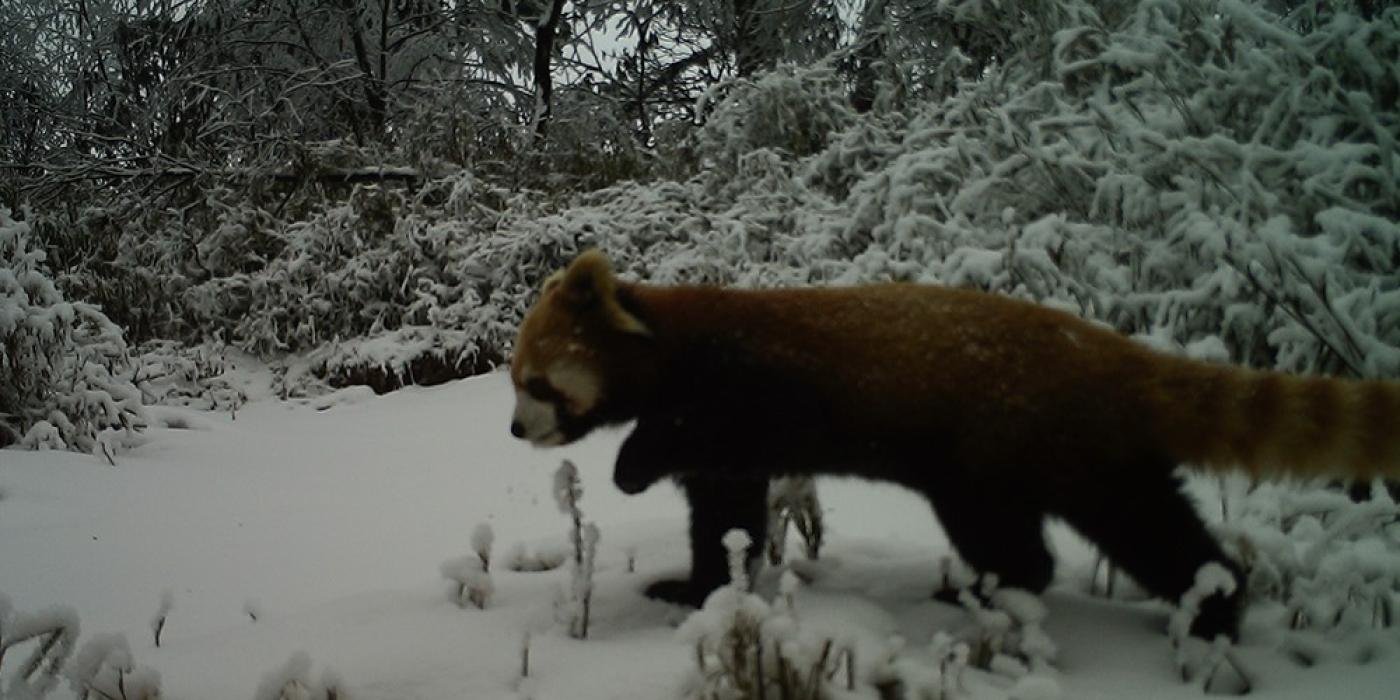Recovery of Biodiversity of European Freshwater Comes to a Halt
Smithsonian’s National Zoo and Conservation Biology Institute scientist Ellen Welti, Ph.D., and her colleagues from the Senckenberg Research Institute and Natural History Museum Frankfurt, Germany, examined biodiversity data from river systems spanning 22 European countries over 52 years. The findings of this study were published Aug. 9, 2023, in the journal Nature. Ellen shared some of the key findings from the study, and explained why there’s reason to be hopeful, despite the underlying concerns.
In this publication, you and your colleagues identify a number of causes for the loss of biodiversity in these European waterways, including agriculture, industry and infrastructure. What impact does the lack of biodiversity have on the health of these ecosystems and for the people around them?
The invertebrates that live in these waterways perform key ecosystem services that we depend on. Some examples include filtering the water we all need to survive or decomposing dead plants and animals in the water. They also eat pests, such as mosquitos. They may be small, but they do a lot for us.
Your research spanned more than 20 countries and over 50 years of data. How large was your data pool?
We included more than 1,800 stream or river sites in this paper, and each site’s data set included at least eight years of aquatic macroinvertebrate sampling. One of our criteria for including a site in our study was that the data had to include all the macroinvertebrates the researchers caught—it couldn’t just be data on mayflies or stoneflies for example.
There were more than 2,500 taxa of macroinvertebrates included in this study. Macroinvertebrates are animals without a spine large enough to be seen without using a microscope. It’s quite a broad swath, including things like dragonflies, caddisflies, crayfish and snails.
With a data set so large, you could have seen varying results. What did your team find?
If you average across all the sites and time periods that we covered, you see a positive trend—an increase in abundance and richness of taxa over time. Which is good!
But if you zoom in to how that trend is changing over the trajectory of the time periods we're covering, another picture emerges. Those increases are happening earlier on, they're happening in the 90s and the early 2000s. This lines up with legislation passed from the 1970s to about 2000 to clean up European waterways.
Right around 2010, we start to see a deceleration of that trend. Many of the sites today have trends that have flatlined; not necessarily declining, but they're not increasing either.
Lots of other data on freshwater systems in Europe show those waterways are still in a fairly degraded state. This led us to believe the biodiversity recovery process has come to a halt.
This particular study examined European waterways. Can we extrapolate these findings to the United States?
While this paper is just about Europe, I think the United States is likely seeing something similar. We went from the 1969 Cuyahoga River Fire to big, sweeping legislation in the 1970s, such as the Clean Water Act, where we had major improvements in our water quality.
But like Europe, we haven’t had much change in terms of new legislation in recent years, and we’re seeing a slow decline in our water quality in many places across the United States. Things like microplastics, insecticides and nutrient runoff are also key stressors for freshwater systems globally that could be mitigated with increased regulations.
Despite the initial recovery period, the data shows biodiversity is not continuing to improve. What is the key takeaway from this study?
Although the initial takeaway is that biodiversity is not continuing to improve, I actually think there’s a silver lining. What the data from earlier time periods show is that we can make a difference in our water quality, and that the legislation to clean up our water systems did have positive impacts. We can make changes like limiting pollution and putting in better sewer systems, and our rivers can recover.
It also shows that you have to continually work to maintain these systems. Obviously, a big elephant in the room is climate change, and that could be one of the reasons we’re starting to see the decline now. That will require much more serious legislation than just the “improving the sewer system” type of problem we have faced in the past.
What are some things we can all do to protect waterways where we live?
We can’t all write legislation, but we can get involved in local waterway restoration projects. You can advocate for removing channelization of streams and restoring the natural floodplain, which is the flat area along the banks of a river or stream. You can advocate against building next to rivers or in areas prone to flooding. You can also advocate for updating your community’s wastewater systems, which is critically important infrastructure that can improve a lot of water quality problems.





